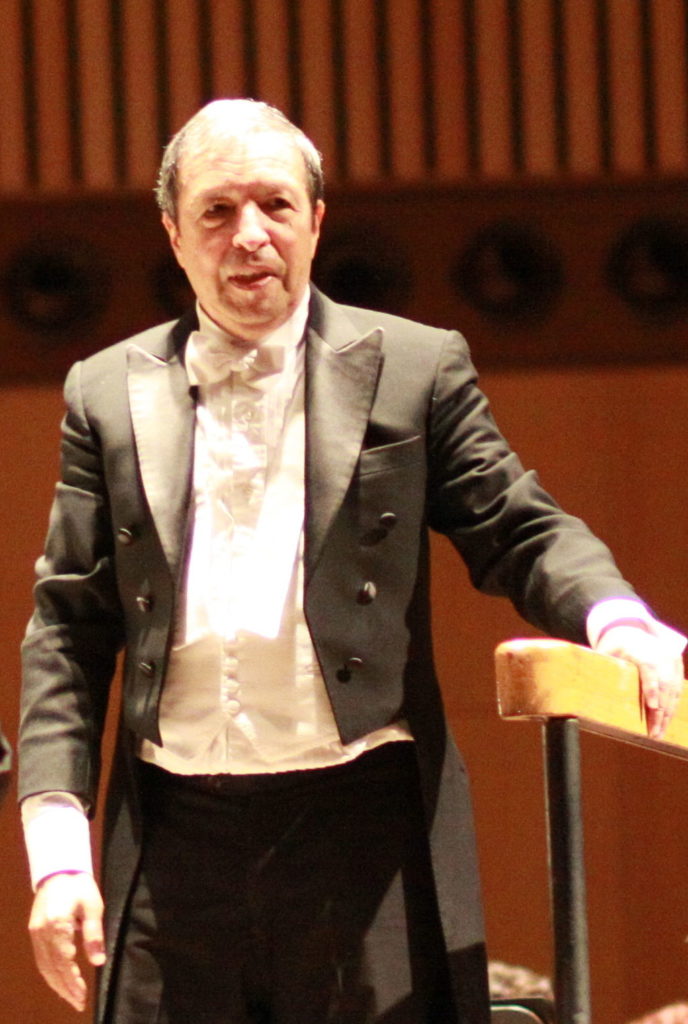What makes a piano superstar? Two Grammy Awards in the classical music genre? Numerous Gramophones? Honorary doctorates from highly heralded universities like Duke and Leeds? An Honorary Knighthood granted by Her Majesty, the Queen of England? Having the grandest of all pianists, the late Vladimir Horowitz, request to hear you play the piano by his bed in his final hours? Pianist Murray Perahia has, is, and has done all of the above, and more.
He is certainly no stranger to any piano aficionado. He has been one of the biggest names out there for the past several decades. And in addition to his numerous Grammy and Gramophone Awards, he was indeed honored with Knighthood by Her Majesty The Queen of England in 2004. And his name is listed in the Gramophone’s Hall of Fame, a list of virtuosi saluted globally as the grandest and most phenomenal pianists, and one that is comprised of only fourteen names. His companions on the list are such larger-than-life names as Arthur Rubinstein, Sergey Rachmaninov, Wilhelm Kempff, Daniel Barenboim, and of course, Vladimir Horowitz.
And it was this Murray Perahia who was the guest of the Borusan Philharmonic Orchestra (BIFO) on 16 January, again under the baton of Sascha Goetzel and at the customary venue of the Lütfi Kirdar Congress Center in Harbiye. The 1700-seat auditorium was packed, and the audience was in for one of the most memorable performances they were sure to ever witness.
The program started off with Schumann’s Piano Concerto in A Minor, Op. 54. My seat had the perfect angle: I was able to see not only the keyboard and Perahia’s hands and fingers doing their magic, but also the reflections thereof from the raised fall board (lingo for “the keyboard lid”). The fall board reminded me of a clear, black pond of crystal. And reflected in it were the image of Perahia’s fingers gliding over, bouncing on, and caressing the ebony and ivory reflections of keys.

Schumann and Perahia started off with a fiery, “allegro affettuoso” movement, continuing on with a moderate but gracious “andantino grazioso” intermezzo that blended the perfect harmony of cello, violin, and intermezzo piano, and the most subtle of double bass. In the third and final movement, Perahia was at times pounding the keys energetically, in “allegro vivace” (“fast and lively”) rhythm, but the sounds came out in beautiful harmony and melody. The melody was at times mellow and graceful, reminding me of dewdrops in an early spring morning or the feeling of silk against velvety skin. At times a crescendo took over, and the entire symphonic orchestra was there. The Concerto ended with Perahia captivating us in the most aesthetic and melodic manifestation of rhythm, energy and vigour, with the entire symphonic orchestra supporting him in the creation of the perfect finale.
Perahia was to perform only during the first interval, and the end of the 30-plus minute Concerto also signalled the time to bid him good-bye. Of course, the audience would not have this, and the long, sustained, and heartfelt applause called him back on the stage for an encore. By the end of his immaculate interpretation of Schubert’s Impromptu, I had earnestly declared him “superhuman,” and brushed aside in my mind all the piano recitals I had ever attended until this particular night as being from an earlier, “pre-Perahia” dark age. And, as Perahia walked off the stage for the final time amid applause and admiration, I whispered into the air, in his direction, “Come back.” Sadly, my whisper was not enough to entice him for a second encore. However, I certainly hope that it will motivate him to come back to Istanbul for another performance in the near future.
Twenty minutes later, and Perahia was back indeed! But, this time, seated among the audience, as the Borusan Philharmonic did its thing. The second interval started off with Vorspiel zu einem Drama (Prelude to a Drama) of Franz Schreker, and featured immaculate first and second violin solos, followed by symphonic unison. The Çeşmebaşı (Fountain) Ballet Suite starred intriguing work of Turkish composer Ferit Tüzün, and we witnessed a pianissimo pizzicato “Introduction” build up to a movement of “Horon,” with castagnets, cymbals, drums, and high fortissimo notes, and the final moments of “Pas de deux” taking us to a mystical sultry evening from the 1001 Nights.
The 90-second fourth movement “Oyun Havasi” (Folkloric Dance) featured an interplay of strings, wind, and brass, and the piece continued on with rhythm, drama, suspense, mystery and just plain creativity. The Symphonic Movement of Ulvi Cemal Erkin started off with intriguing notes of the triangle, barely audible, and boomed into an orchestra and brass. In the fourteen minutes that followed there were drum rolls, chimes of the harpischord, thunder, eeriness, suspense, and action! Only the Bachanelle dance from Camille Saint-Saens opera Samson et Delilah could follow suite. It featured all the creativity of the preceding pieces, and blended a sprightly vivace spirit with oriental charm and suspense. As we applauded one last time, we thanked Borusan Philharmonic for this evening to remember.
Melis Kanık is a contributor to Yabangee
Image source: (photo by Levg (own work) (CC BY-SA 3.0))











Reviewing performances is HARD, and you do it so well, Melis! Would love to have seen this one.
Thanks Mrs. Misner! It means a lot that you like it! 🙂